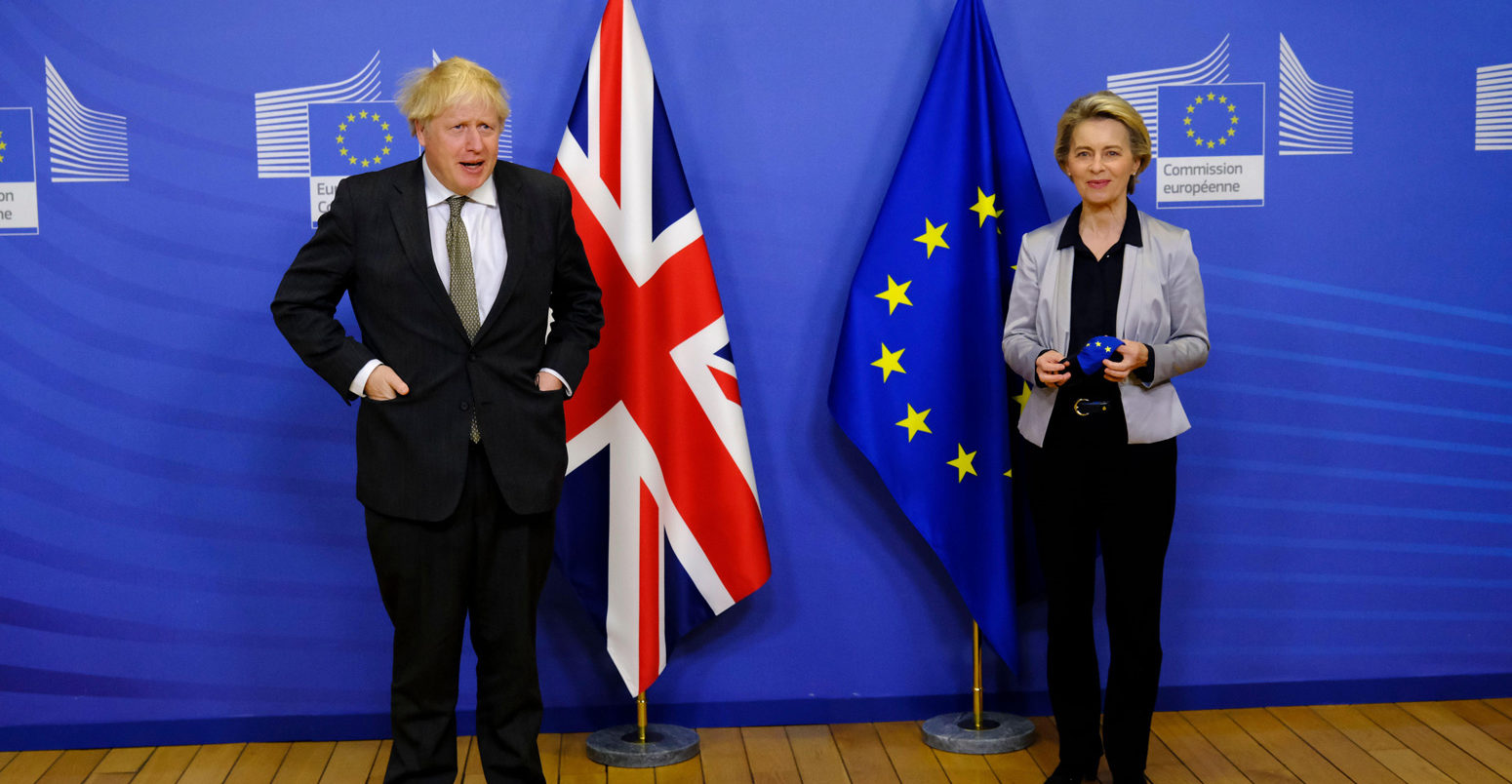
Q&A: What does the Brexit deal say about climate change and energy?
Josh Gabbatiss
01.18.21Josh Gabbatiss
18.01.2021 | 8:00amLast month, four years after the Brexit referendum, the UK and the EU agreed on a trade deal just days before the 31 December deadline.
As well as guaranteeing tariff-free trade on many goods, the deal includes extensive references to the importance of tackling the “existential threat to humanity” posed by climate change.
Carbon Brief has extracted the key components relating to climate and energy from the 1,250-page document, as well as gauging the views of experts.
Some welcomed it as the best free trade deal on climate ever agreed – a potential “game changer” that enshrines in the text both sides’ net-zero targets and a commitment to the Paris Agreement.
However, there is also concern about weakening environmental regulations due to the UK’s efforts to “water down” the climate language and distance itself from European oversight.
This Q&A examines the circumstances surrounding the Brexit deal, what it actually says about climate change, and the likely influence it will have on climate action in the years to come.
- What have been the key concerns about Brexit and climate change?
- What does the Brexit deal say about climate change?
- Will the Brexit deal help or hinder climate action?
- What does the Brexit deal say about clean energy?
- What about the UK’s new emissions trading scheme?
- Do any other unresolved issues remain?
What have been the key concerns about Brexit and climate change?
There were widespread concerns after the 2016 referendum that decades of EU climate and environmental policy would be forfeited by the UK.
Green groups made it clear that when seeking a trade deal with the EU, the nation should aim for close cooperation on the environment and the maintenance of existing laws. Around 80% of the UK’s environmental legislation comes from Europe.
While the UK often led on climate and environmental issues during its EU membership, there were warnings that it could return to its pre-EU role as the “dirty man of Europe”.
There were particular concerns about the impact a “no-deal” Brexit would have, with predictions of a scramble to set up new laws, institutions and processes to fill the gaps.
Ministers emphasised there would be no relaxing of climate standards following the UK’s departure, with former environment secretary Michael Gove saying the government was committed to a “green Brexit”.
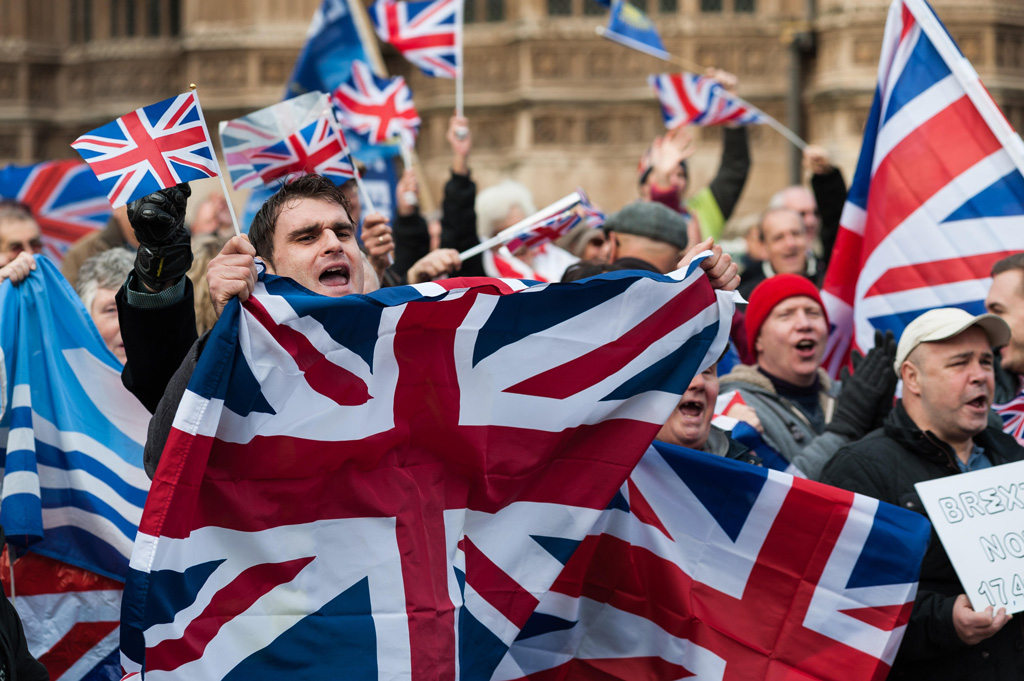
Following the referendum, Carbon Brief compiled a list of 94 unanswered questions for climate and energy policy raised by the result of the vote.
These included queries about the UK’s place in international climate negotiations, the impact of Brexit on energy bills and how the UK’s departure would affect internal EU climate politics.
Four years later, the UK faces a totally different political landscape, largely shaped by Brexit’s political fallout, and many of these questions have already been resolved, or are no longer relevant.
The Conservative leadership has undergone a complete overhaul, with a new pro-Brexit prime minister and accompanying ministers in key energy and climate positions.
The EU, with the UK still a member, ratified the Paris Agreement and both parties have separately announced updated, more ambitious climate pledges, known as “nationally determined contributions” (NDCs). Both have also set net-zero targets for 2050 and the UK is on its way to approving its sixth carbon budget for the mid-2030s.
Other questions remain unanswered, such as which UN Framework Convention on Climate Change (UNFCCC) negotiating bloc the UK will join now it is no longer in the EU. (Carbon Brief understands that, as the current COP president, the UK does not need to be formally aligned with a negotiating bloc at the COP26 summit in Glasgow in November and, thus, any decision can wait until afterwards.)
The new trade deal, concluded on Christmas Eve 2020, addresses some of the remaining uncertainty around climate and energy, although much still remains undecided about the relationship between the two sides.
What does the Brexit deal say about climate change?
Boris Johnson, the current UK prime minister and a key architect of Brexit, emphasised his government’s commitment to sovereignty in his statement following the deal’s climax. He stated that the nation had “taken back control of every jot and tittle of our regulation”.
However, the agreement contains extensive references to the two parties’ shared commitment to climate action, an area that is likely to see both sides working together for many years to come.
At a press conference on the outcome of the negotiations, European Commission president Ursula von der Leyen said:
“We will continue cooperating with the UK, in all areas of mutual interest. For example in the fields of climate change, energy, security and transport. Together we still achieve more than we do apart.”
Overall, the word “climate” is used 51 times in the final document, including three times in the opening paragraphs.
There are also 13 mentions of “emissions”, nine of “Paris Agreement” and climate change is referred to as an “existential threat to humanity” twice.
The agreement includes commitments to maintaining and “striv[ing] to increase” each party’s “climate level of protection”, which is defined as a 40% economy-wide reduction in emissions by 2030 in the EU, with the UK meeting its share of this target. (The year is not mentioned, but both parties use 1990 as their baseline for calculating emissions reductions.)
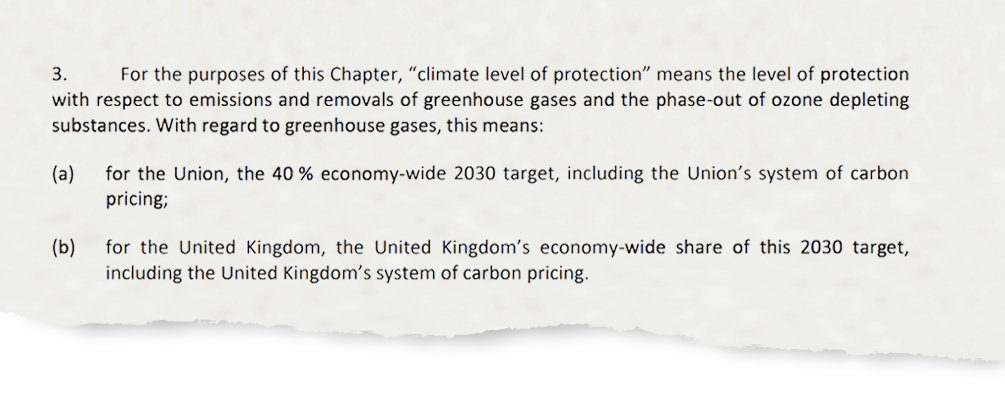
This target is slightly outdated as it is based on the EU’s first nationally determined contribution (NDC) under the Paris Agreement. It does not reflect the latest version which raised ambition to 55% reductions, but was only agreed in December. Similarly, the UK’s recently updated target of a 68% reduction is not referenced.
However, greater ambition is reflected by both parties as they reaffirm their “ambition of achieving economy-wide climate neutrality by 2050”, referencing their respective net-zero targets.

The “fight against climate change” is an “essential element” of the agreement, a status generally assigned to core principles, such as respect for human rights and the rule of law.

“Materially defeating the object and purpose of the Paris Agreement” is mentioned specifically as an example of a failure to fulfill this essential element.
As such, if either party was to somehow renege on its obligations under Paris, the entire Brexit trading agreement could be suspended.

All of this is “very significant”, according to Shane Tomlinson, deputy CEO at climate thinktank E3G:
“This has stronger languages on climate change, and climate change is more central to the agreement, than any other trade agreement that exists at the moment. The fact that it explicitly references the Paris Agreement shows that climate change is a top level geopolitical issue that really matters to both sides.”
Markus Gehring from the Centre for European Legal Studies at the University of Cambridge says that while, in his view, it is not better than EU membership or an association agreement, “this is the most advanced climate cooperation that I’ve seen” for a free-trade agreement:
“[Climate is] no longer a ‘nice to have’. It’s a core part that defines the relationship of the two sides.”
Will the deal help or hinder climate action?
Owing to the emissions associated with traded products, energy ties between nations and the risk of “carbon leakage”, climate action and trade are inextricably linked.
This connection is recognised in the UK-EU trade deal text, with commitments to promoting the “mutual supportiveness of trade and climate policies” and removing obstacles to the trade in relevant goods, such as renewable energy and energy-efficient products.
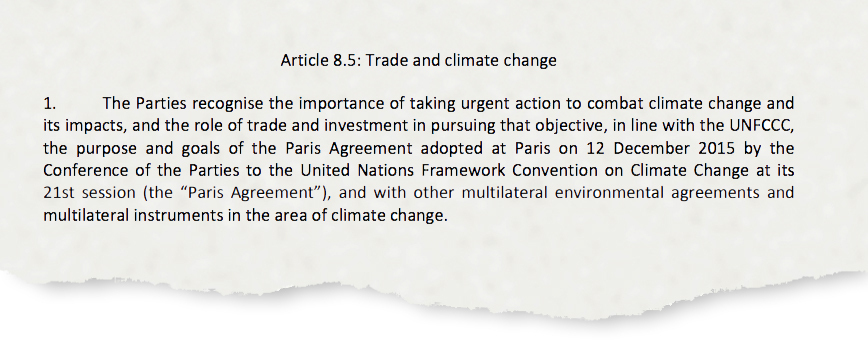
The deal’s strong climate language may help ensure that standards do not slip for either party, while also driving more ambition in the future.
Moreover, as the UK tries to strike its own trade deals with other major economies, setting high standards at this stage could have a positive knock-on effect around the world.
However, with the UK also pushing to distance itself from the EU with a “sovereignty-first” Brexit, there remain concerns about the maintenance of high standards in the future.
Despite the concerns about green policies being “wiped from the statute book”, Prof Andy Jordan, an environmental policy expert at the University of East Anglia who also works with the Brexit & Environment network, says this has essentially been avoided.
“EU laws have been copy and pasted (‘retained’) into UK law. However, if that retained law is not adequately monitored and updated there is a risk that it regresses ‘by default’.”
When the EU released its proposed deal in May, reports noted that the two sides were “clashing” over the status of climate in the negotiations. “In these talks, the EU was the one pushing for more ambitious climate language,” says Gehring.
One example of this playing out is the downgrading of the 2050 net-zero target from “objective” to the less binding language of “ambition” in the final agreement. There was a similar shift in the wording around the implementation of the Paris Agreement.
Maintaining and enforcing climate standards
Marley Morris, an associate director at the Institute for Public Policy Research (IPPR) who wrote a report on the agreement, agrees that, while the overall outcome is far better than other free trade deals, it is a step down from the EU’s ambitions:
“Given what we were hoping for and what the EU had been aiming for, it is disappointing to see that the agreement is a lot weaker. And it seems to be weaker because the UK took action to try to water down those commitments on environment and labour, so they would be able to have as much freedom as possible in the future.”
This outcome is largely the result of intense negotiations over the “level playing field”, which refers to the argument from the EU that maintaining tariff- and quota-free trade requires rules on fair competition.
This might mean ensuring that heavy-polluting industries, such as steel or cement, in both the UK and EU have to take the same, potentially expensive measures to curb emissions in order to prevent one undercutting the other with cheaper, dirtier products.
The final deal has a “non-regression” mechanism that prevents all parties from weakening environmental standards from EU levels as of 1 January 2021.
Ideally, this would apply no matter what the economic outcome of such regressions, as was the case with the EU’s initial text. This would mean that climate policies need to be maintained whether or not deregulation impacts the economy.
While a mechanism was agreed, it will only be applicable for environmental and labour standards if weakening standards has a demonstrable impact on trade or investment.
“We know from other agreements that proving that impact on trade can be tricky,” says Tomlinson.
📈Standards📉
— Greener UK (@GreenerUK_) January 4, 2021
Both sides have stated that they are ‘determined to maintain and improve their respective high standards’. This is welcome! But the commitment to ‘non-regression’ only applies to cases affecting #trade & #investment – notoriously difficult to prove 2/
Analysis by the Institute for Government notes that this “focus on impact could limit how these provisions are used”. As such, the IPPR concludes the deal “is unlikely to prevent the UK government from weakening EU-derived labour and environmental policies, if it so chooses”.
Another highly contested issue was how to ensure that environmental standards are not only maintained, but keep pace if one of the parties decides to increase theirs significantly. This is important, given the need for escalating climate ambition in the coming years.
The final deal includes “rebalancing” measures that mean if the UK, for example, did not keep pace with EU emissions standards, the bloc could take action, such as imposing tariffs.
Once again, this would only apply if a harmful impact on trade could be demonstrated, and experts tell Carbon Brief this would make it harder to enforce.
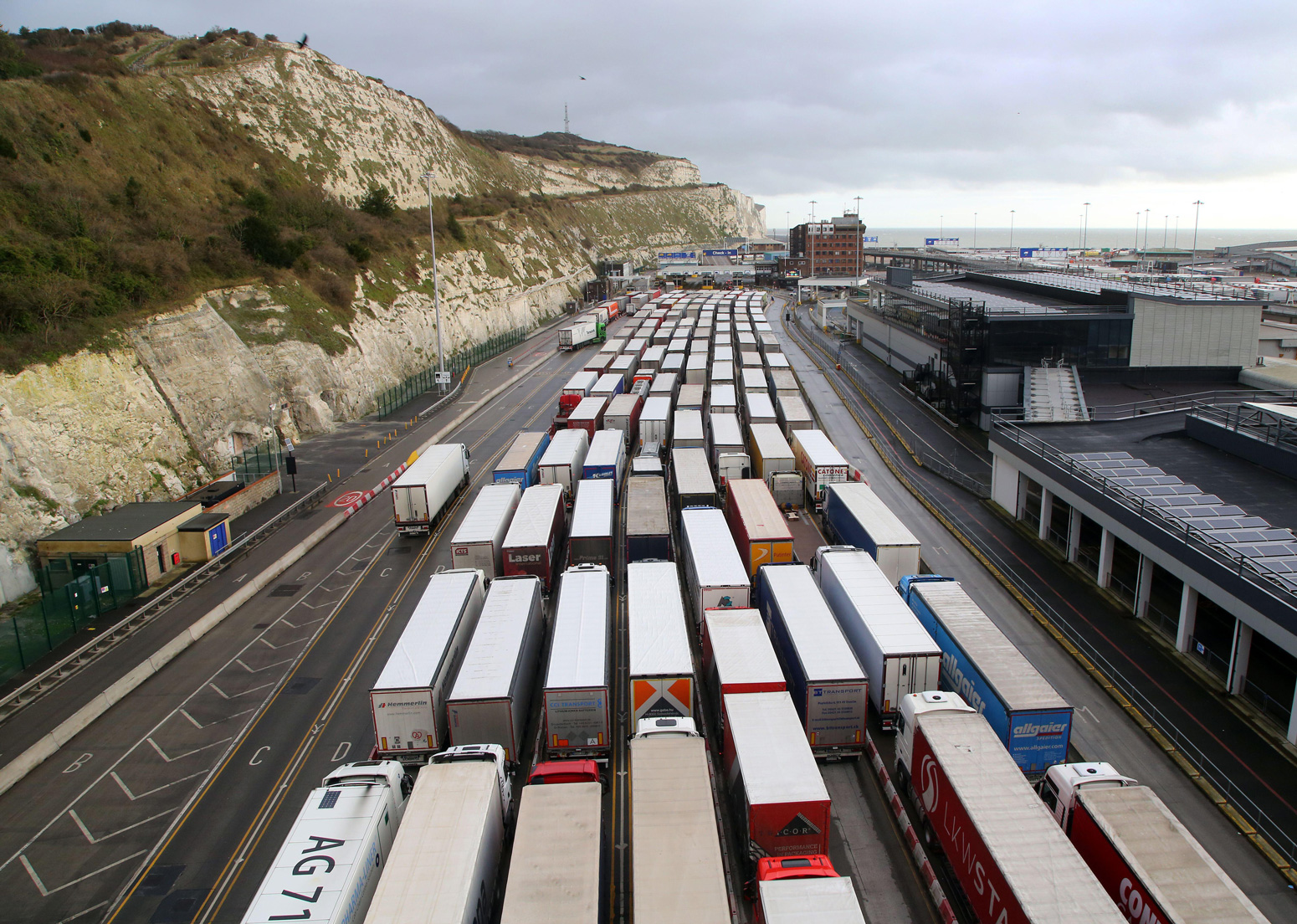
The deal also contains weaker measures to enforce any breaches of environmental standards, as the “dispute settlement mechanism” that covers most of the deal does not apply to the “environment” or “sustainable development” sections.
As a result, “the extent to which climate standards and targets will be enforced by the agreement is not certain,” according to Sarah Williams, the head of environmental NGO group Greener UK.
Instead, such disputes would be managed by what Greener UK calls a “weaker mechanism”, involving consultations between parties and a panel of experts with “specialised knowledge”.
Decisions from this process would be non-binding, although, again, if an activity impacted trade or investment and made one party less competitive they would be able to take action.
Tomlinson says the inclusion of these specialised panels is the result of the UK not wanting to be answerable to the European Court of Justice.
He adds that this also makes domestic enforcement “really important”. The government has been touting its new Office for Environmental Protection (OEP) to replace EU institutions and “hold the government to account on its commitment to reach net-zero emissions by 2050”.
The environment bill establishing the OEP will soon be finalised, but lawyers at Client Earth have warned that recent “government changes to the bill undermine the OEP’s independence by allowing for increased government influence”.
4/4: Finally enforcement will be down to domestic authorities who “shall have adequate & effective remedies available to them” so all eyes on the #EnvironmentBill & the #OEP which recent Government amendments have sought only to further weaken – another chocolate fireguard to fix
— Kate Jennings 💙 (@KeasdenKate) December 29, 2020
As for the separate point that breaching the Paris Agreement constitutes an action that could compromise the entire trade agreement, experts tell Carbon Brief that this is a very high threshold to meet.
“The UK [or EU] would have to renounce the Paris Agreement or clearly not be delivering on that,” says Morris.
Future trade deals
In terms of the Brexit deal’s impact on global trade, Gehring says that countries often tend to use their existing trade agreements as “boilerplates” and replicate the same language.
This is partly out of necessity as otherwise they risk undermining their own ability to meet prior agreements.
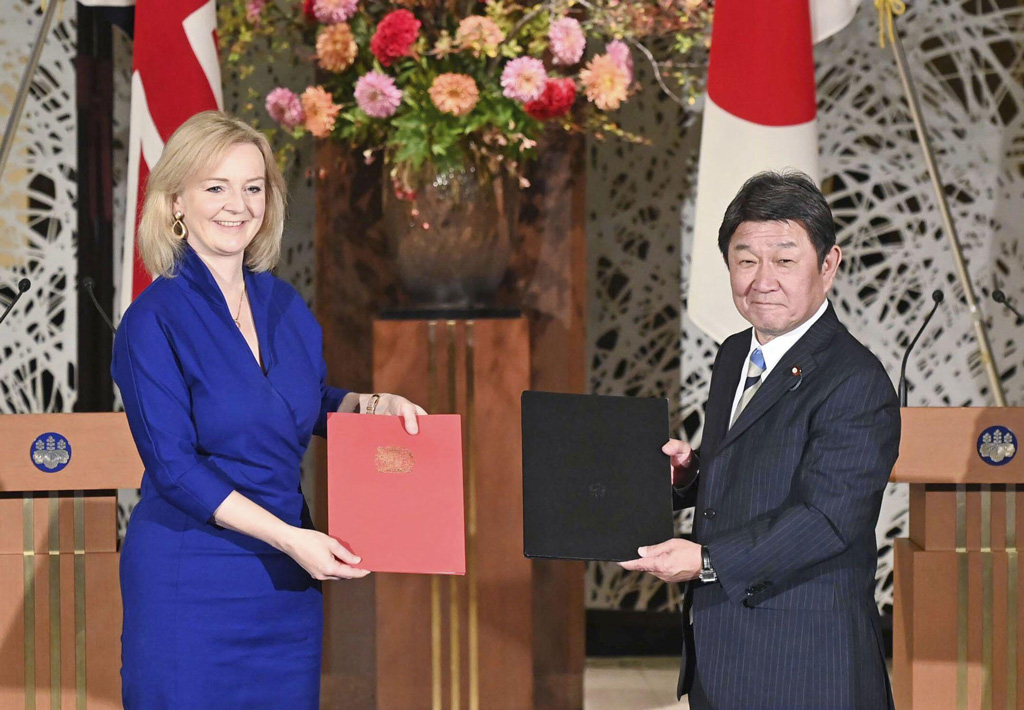
As the UK undertakes negotiations with big emitters including the US, China and India, this could be a “game-changer” for international trade, as Gehring notes:
“If you want zero-tariff, zero-quota trade with the UK you probably will have to agree to some form of climate commitment that links your climate performance to the operation of the agreement.”
However, Morris says the UK’s own efforts to “water down” the agreement with the EU are “a bit of an own goal” when it comes to trade:
“The UK will probably want to include strong environmental commitments in other trade agreements…and, if it looks like it is trying to weaken the agreement in its closest trade relationship with the EU, that makes it harder.”
Finance
Trade agreements are meant to generate wealth for participants, but commentators have pointed out that the UK government’s prioritisation of sovereignty could have a negative impact on the nation’s prosperity.
Estimates vary, but the government’s own modelling suggests that a trade deal of the variety just agreed will leave the UK’s GDP 4.9% lower over 15 years.
This will likely be an issue for the nation’s plans for net-zero emissions by 2050, according to Sarah Williams at Greener UK. She tells Carbon Brief:
“The deal is likely to result in less money being available to tackle environmental challenges and deliver net zero – at a time when the UK government needs to increase its spending.”
The cost of achieving net-zero is the subject of much debate. Modelling for the Committee on Climate Change (CCC) suggests net-zero savings will, ultimately, cancel out investments, but there is no doubt it will require considerable spending in the short-to-medium term.
What does the Brexit deal say about clean energy?
Close collaboration on energy is unusually important for the EU-UK trade deal, owing to the physical gas and electricity networks linking Northern Ireland and Ireland, as well as the underwater interconnectors between the UK and mainland Europe.
The document contains a commitment from both parties to “promot[ing] energy efficiency and the use of energy from renewable sources”.
While the UK will no longer be a member of the single energy market, the deal has language around the efficient use of interconnectors and mentions cooperating on the development of offshore wind power in the North Sea.
“The UK and EU have agreed to create a system to trade electricity efficiently across interconnectors, which will help maximise the potential of the UK’s renewable resources and reduce the cost of decarbonisation,” says Williams.
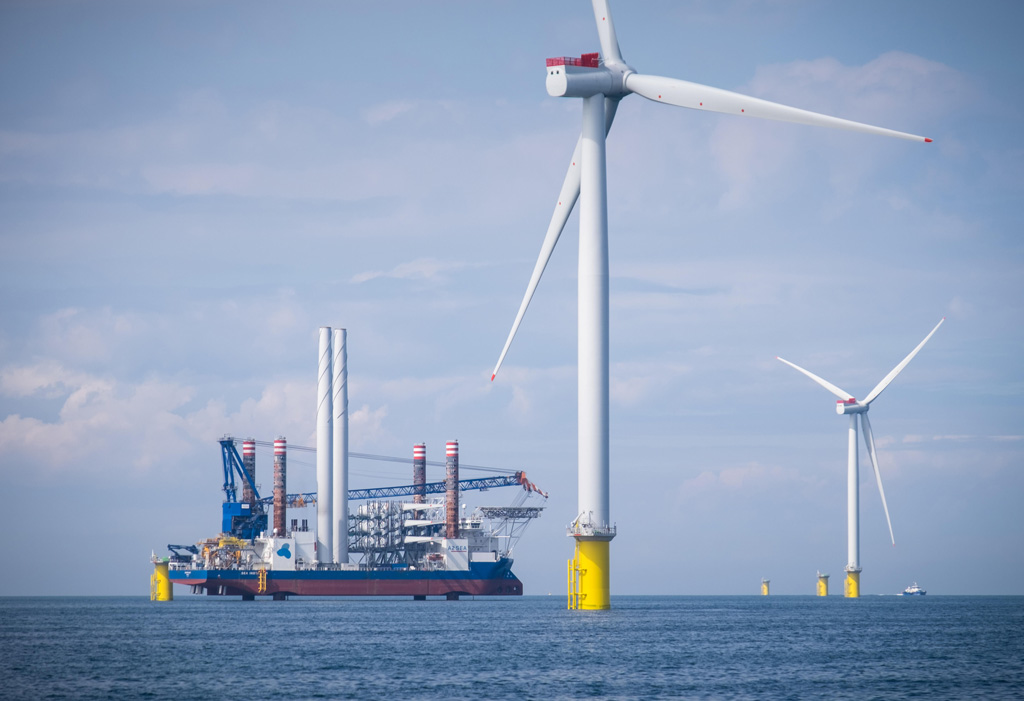
However, as with various other key aspects of the Brexit deal, the exact arrangements are yet to be agreed.
For matters relating to energy, the deal is “largely an agreement to have an agreement,” says Tomlinson.
This essentially means more negotiations. Tomlinson says that, according to government officials, this is expected to take another 12-15 months.
What about the UK’s new emissions trading scheme?
As of 1 January, the UK has a new emissions trading scheme to replace the EU ETS, covering a third of the nation’s emissions and around 1,000 UK factories and power plants.
However, potential market participants have expressed their concerns to the government as much about this new system still remains unknown.
The UK ETS could play an important role in decarbonising high-emitting sectors, such as power and heavy industry, by allocating them credits for their emissions and allowing them to trade any that are beneath a set threshold.
After months of speculation, the government’s new energy white paper laid out its vision for a UK ETS, but experts told Carbon Brief they were sceptical that such a system would work without any international partners to trade with.
The government was ambiguous about the possibility of linking systems, with the white paper referencing the nation being “open to linking the UK ETS internationally… but no decision on our preferred linking partners has yet been made”. However, the most obvious partner would be the EU.
The EU ETS is around 11% smaller without the UK. A linked system would likely be beneficial for both parties and help them on their respective paths to net-zero emissions.
Getting this right is especially important because an ineffective emissions trading system can actively undermine rather than drive decarbonisation.
The European Federation of Energy Traders (EFET), a trade association, has stated that a standalone UK ETS would not be able to deliver enough liquidity for the market to operate efficiently and could “bring a number of adverse consequences”.
The Brexit deal includes a section on “carbon pricing”, but does not explicitly refer to an ETS, in principle allowing the UK to introduce either such a scheme or a carbon tax, or even both.
It also emphasises that the “effectiveness of the parties’ respective carbon pricing systems shall uphold” their climate targets.
Crucially, the document says both parties “shall give serious consideration to linking their respective carbon-pricing systems,” but this is as far as it goes. Whether or not this comes to pass will depend on the coming months of negotiations.

“The UK version of the ETS is created very much with a view to linking down the line. To a certain extent that has been baked into the system that the UK has created,” says Tomlinson.
Dr Brendan Moore, a climate policy expert at the Tyndall Centre for Climate Change Research who also works with the Brexit & Environment network, tells Carbon Brief it would probably “make a lot of sense” to link with the EU. However, he says this would require a degree of compromise from the UK:
“As the experience of Switzerland and especially Norway show, if the UK wants to link it will need to more or less mirror the design of the EU ETS, i.e. it won’t be a negotiation so much as a take-it-or-leave-it offer.”
Moore adds that he is “sceptical” at the prospect of the current UK government totally accepting such terms “given their strong red lines on regulatory autonomy”. Therefore, he suggests a likely scenario in which the two systems are similar, but not actually linked.
Separately, the climate thinktank Ember has expressed concerns that the UK system’s cap for emissions is set to high, a feature that would result in a low carbon price.
“Such a low price would be an international embarrassment ahead of COP26 in Glasgow, and damage the low-carbon investment signal the UK needs to achieve net zero,” analyst Phil MacDonald wrote in a blog post on the day of the Brexit deal last month.
More detail on the UK ETS will emerge ahead of the first round of emissions credit auctions in spring this year. Meanwhile, there is pressure for negotiations on any linkage with the EU to proceed as quickly as possible.
Do any other unresolved issues remain?
While the trade deal marks a symbolic end to four years of often rancorous discussion around Brexit and what it means for the two countries, the reality is that much still remains to be decided.
“In a lot of ways this is the start of something not the end of something…There are a lot more further negotiations between the UK and EU to actually operationalise the agreement they put out,” Tomlinson tells Carbon Brief.
Negotiations will continue in the years to come and the deal text will be expanded over time as more agreements are made.
Crucially, the UK will also need to expend significant resources to sort out, with the EU, the real-world application of various climate-relevant concepts such as what constitutes a breach of the “non-regression” principle.
Jill Rutter, a senior research fellow at UK in a Changing Europe, wrote in a blog post that, as a result of these on-going discussions, “Brussels could be lurking in the corner of UK domestic policy debates for decades to come”.
Tomlinson also notes that, “because of the line on sovereignty that the UK ran, it’s a much thinner agreement…Basically, it’s a deal on goods, it’s not really a deal on services.”
This means there are still “question marks” about the UK’s ability to lead on green finance or offer consulting services for energy and climate within the EU, he says.
With all of these aspects, as well as the key issues of energy and an ETS still to be decided, negotiations are expected to continue for some time.
“We really need to establish new ways of working together across the board,” says Williams.
-
Q&A: What does the Brexit deal say about climate change and energy?
-
Q&A: Is the Brexit deal a ‘game-changer’ for tackling climate change?

